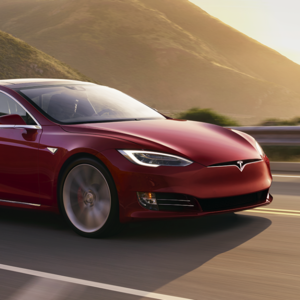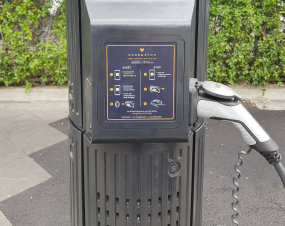The eHighway on-road charging system has had its first successful trial on the German autobahn. The ambitious project allows transport trucks to run on electricity without long stoppages, saving money, diesel, and improving air quality. Could charging road trains on-the-go be Australia’s future?
Electrifying transport trucking has seemed like a pipe-dream since the early days of electric vehicles. Trucks’ need to travel extreme distances without stopping has been a major obstacle for a technology restricted by low charge rates; the savings of electric power just aren’t enough to offset the costs of long charge stops.
But global transport giant Siemens might have found a way around the problem. After several years of development and in-house testing, eHighway has made its way to a public road on a 10 km stretch of autobahn between Frankfurt and Darmstadt.
How does it work?
eHighway works more-or-less the same as an overhead tram or rail line. Cables are stretched over a lane of highway and trucks charge through a raised pantograph. When the cable runs out they activate a diesel engine and carry on as normal. The charge in their batteries allows overtaking in non-cabled lanes without switching to diesel.
The lines themselves are supported by two-pole catenary supports placed at regular intervals along the highway. The overhead contact wire is designed to allow stable current transmission at any speed.
The truck-mounted pantograph functions similarly to those seen on electric trains. The driver is able to raise and lower it as required, and it automatically compensates for any movement within the lane to maintain contact with the contact wire.
Slow progress
While Germany’s eHighway is the largest, it is not the first public trial of the technology worldwide. Sweden has been operating two kilometres of eHighway since 2016, and a mile of LA’s port road has been electrified since 2017. Two more stretches of eHighway are under construction in Germany.
But even if all goes according to plan for Siemens, it will still be a long time before eHighway sees any large scale use. Only five vehicles will be equipped to operate Germany’s stretch by mid-2020, and only two are being used in Sweden.
An Aussie solution?
It’s no secret that Australia runs on the back of the road train. Big trucks are as ubiquitous on regional roads as LandCruisers or kangaroos. Freight-carrying trucks (rigid and articulated) travelled 18 billion kilometres in Australia last year, a 2.1 billion increase since 2010. With all that diesel being burned each year, it stands to reason that a time-efficient electric alternative would be a boon for the country. But is eHighway the way to do it?
The biggest obstacle to a system of this type in Australia is distance. While a few kilometres of high-use road makes for a valuable eHighway investment in Germany or California, Australian highways are notoriously long and under-utilised by comparison.
Even the most driven roads in the country are tiny by European or American standards. Not only would expensive cable and poles have to be installed over hundreds of kilometres to electrify a single route, but entirely-new electric infrastructure would be required to power it.
But what about city-bound port roads like in Fremantle or Adelaide? This is where the cost of the vehicle modifications becomes an issue. Very few Aussie freight trucks travel exclusively in these areas, so the added expense of the pantograph, electric motor, and batteries becomes significantly harder to justify when it can’t all be used during regular operation.
The viability of eHighway rests on high density roads with large numbers of outfitted trucks. For Australia’s vast distances and low population the economics just don’t add up. At least not yet. Perhaps the story would be different if more vehicles could utilise the technology, but eHighway’s verticality makes it almost impossible for non-trucks to use.
In Australia it will be passenger vehicles that drive the EV revolution. For more information on electric vehicle charging you can visit our Resources page or contact our technicians directly at info@jetcharge.com.au.




